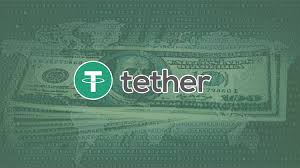Introduction to Tether: The World’s Most Popular Stablecoin
In the volatile world of cryptocurrencies, one digital asset has remained remarkably stable – Tether (USDT). As the pioneer and largest stablecoin by market capitalization, Tether plays a crucial role in the crypto ecosystem. But what exactly is Tether, how does it maintain its value, and why is it so widely used?
This comprehensive guide will explain everything you need to know about Tether in simple terms, including:
- What Tether is and how it works
- The different types of Tether tokens
- How Tether maintains its 1:1 peg to the US dollar
- Where and how to buy USDT
- The pros and cons of using Tether
- Controversies and regulatory challenges
- The future of Tether and stablecoins
By the end of this article, you’ll understand why Tether has become an essential tool for crypto traders and investors worldwide.
What is Tether (USDT)?
Tether (USDT) is a stablecoin – a type of cryptocurrency designed to maintain a stable value by being pegged to a reserve asset, in this case, the US dollar. Each USDT token is theoretically backed by $1 held in reserves by Tether Limited, the company behind the cryptocurrency.
Key Facts About Tether
✔ Launched in 2014 (originally as Realcoin)
✔ 1 USDT = $1 (pegged to USD)
✔ Market cap: $110+ billion (as of 2024)
✔ Available on 10+ blockchains including Ethereum, Tron, Solana
✔ Daily trading volume: $50+ billion
How Does Tether Work?
Tether’s operation is based on a simple but powerful concept:
- Backing Mechanism: For every USDT issued, Tether claims to hold $1 in reserves (cash/cash equivalents)
- Redemption: Users can theoretically exchange USDT back to USD
- Transparency: Regular attestations (not full audits) show reserve status
Unlike volatile cryptocurrencies like Bitcoin, Tether’s value stays close to $1 because of this backing mechanism. This stability makes it ideal for:
- Trading between cryptocurrencies
- Storing value during market downturns
- Moving funds between exchanges quickly
The Different Types of Tether Tokens
While USDT is the most well-known, Tether actually issues several stablecoins:
- USDT (Pegged to USD)
- EURT (Pegged to Euro)
- CNHT (Pegged to Chinese Yuan)
- XAUT (Pegged to gold)
USDT itself exists on multiple blockchains in different versions:
- Omni Layer (Original Bitcoin-based version)
- ERC-20 (Ethereum version)
- TRC-20 (Tron version, popular for low fees)
- SPL (Solana version)
Why is Tether So Popular?
Tether dominates the stablecoin market because:
- Liquidity: Available on nearly every exchange
- Stability: Maintains its peg remarkably well
- Speed: Transactions faster than bank transfers
- Accessibility: Easy to obtain and use
- Trading Pairs: Most crypto-to-crypto trades use USDT
How to Buy and Store Tether
Where to Buy USDT
- Cryptocurrency Exchanges:
- Binance
- Coinbase
- Kraken
- FTX
- Peer-to-Peer Platforms:
- LocalBitcoins
- Paxful
- Tether Direct (For institutional investors)
How to Store USDT Safely
- Exchange Wallets (Convenient for trading)
- Software Wallets (Trust Wallet, MetaMask)
- Hardware Wallets (Ledger, Trezor – most secure)
- Tether.to (Official wallet)
Tether Controversies and Risks
Despite its popularity, Tether has faced significant criticism:
- Reserve Backing Questions: Ongoing concerns about whether all USDT is fully backed
- Legal Issues: Settled with NYAG for $18.5M over reserve misrepresentations
- Centralization Risk: Controlled by a single company
- Regulatory Uncertainty: Potential future crackdowns
Tether vs Other Stablecoins
| Feature | USDT | USDC | DAI | BUSD |
|---|---|---|---|---|
| Issuer | Tether | Circle | MakerDAO | Binance |
| Backing | Mixed reserves | Cash+securities | Crypto collateral | Cash+securities |
| Market Cap | $110B+ | $50B+ | $5B+ | $20B+ |
| Transparency | Attestations | Audits | On-chain proof | Audits |
The Future of Tether
As cryptocurrency adoption grows, Tether faces both opportunities and challenges:
Opportunities:
- Continued growth of crypto trading
- Potential CBDC partnerships
- Expansion into new financial services
Challenges:
- Increased regulatory scrutiny
- Competition from other stablecoins
- Need for greater transparency
Conclusion: Should You Use Tether?
Tether remains the most widely used stablecoin despite its controversies. It’s particularly useful for:
✔ Crypto traders moving between positions
✔ Investors seeking stability during volatility
✔ Those needing fast, low-cost transfers
However, users should be aware of the risks and consider diversifying with other stablecoins like USDC for larger holdings.
As the crypto market evolves, Tether will likely continue playing a major role, but may need to adapt to increasing demands for transparency and regulation.
Frequently Asked Questions About Tether
Q: Is Tether really backed 1:1 by USD?
A: Tether claims all USDT is backed by reserves, but these include cash equivalents, not just dollars.
Q: Can Tether lose its peg?
A: It’s rare but possible during extreme market conditions or loss of confidence.
Q: Is Tether safer than Bitcoin?
A: Different risks – Tether has counterparty risk while Bitcoin has volatility risk.
Q: How is Tether different from USDC?
A: USDC is more transparent with regular audits, while Tether has greater liquidity.
Q: Can I earn interest on Tether?
A: Yes, through various crypto lending platforms and DeFi protocols.

